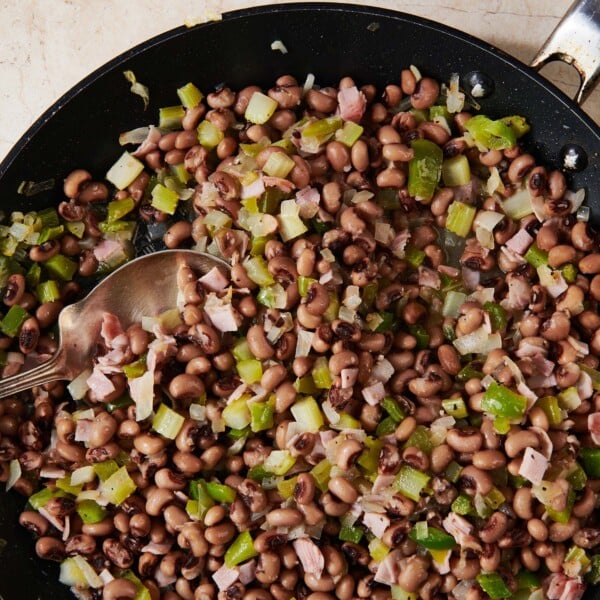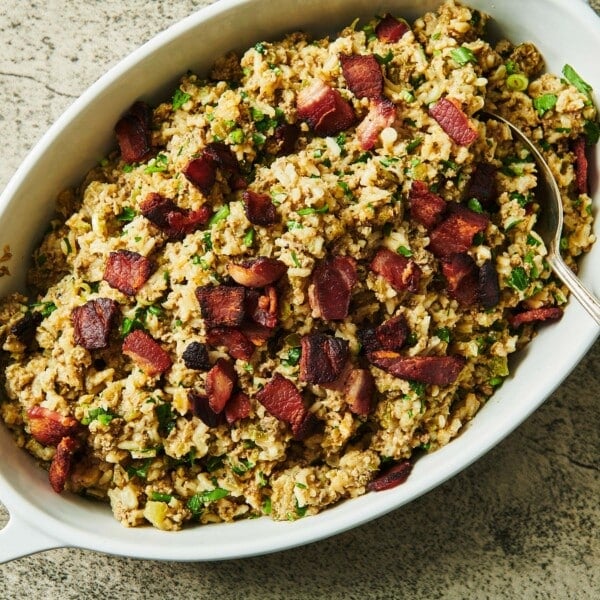Southern Collard Greens with Bacon
on Dec 26, 2022, Updated Jul 10, 2024
This post may contain affiliate links. Please read our disclosure policy.
Amazingly tender and flavorful, collard greens and bacon are perfect with any Southern vibe meal (make sure to make use of the pot likker!).
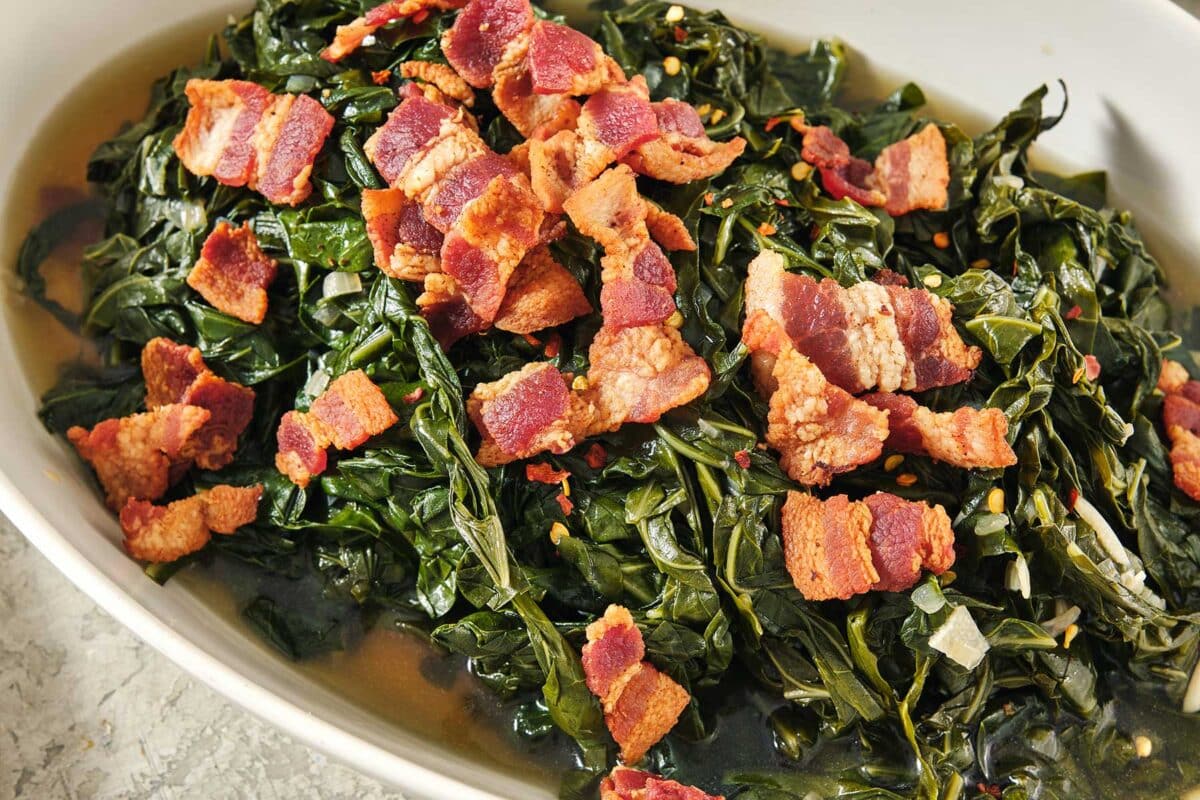
Well-cooked collard greens are one of the pride and joys of cooks from the South. They may be braised for hours until they are extremely soft, or they may be cooked for less time and have a more substantial texture. Or something in between. That is up to you! I like them somewhere right in the middle.
On the occasions I have been down South and had the chance to eat at a true Southern joint, such as a barbecue spot, I am always hopeful that there will be collard greens on the menu. And I’ve rarely been disappointed. I can picture the steaming tray of braised collard greens at Smokey John’s in Dallas, Texas. I know other people were eyeing the brisket and the ribs with deep love, but I went right for those greens.
Collard greens are usually made with some sort of pork, and this collard greens recipe relies on easy-to-find bacon for that pop of deep smoky flavor. Serve these collard greens with other Southern favorites like Grits or Cornbread on the side. They’re also great with Chicken Fried Steak with White Gravy and definitely oven-baked Texas-style brisket.
Table of Contents
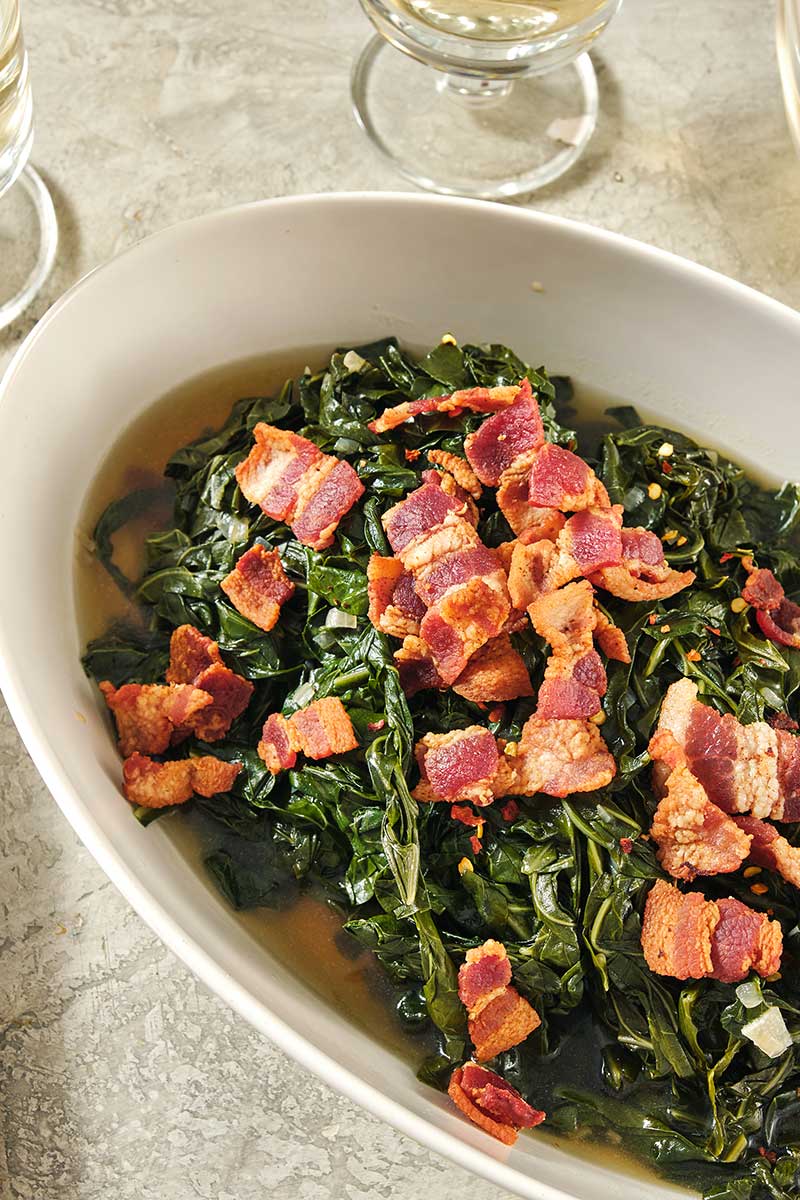
Collard Greens with Bacon: Amazingly tender and flavorful, perfect with any Southern vibe meal (make sure to make use of the pot likker!).
Tweet This
What Are Collard Greens?
Collard greens belong to the brassica family, the same family that includes cabbage, kale, and spinach. Their peak season is winter through early spring. Look for leaves that aren’t too thick or large, as those will be tougher than smaller, thinner leaves.
Bacon in Collard Greens
In the South, making collard greens with a leftover piece of ham or ham bone is very traditional. The ham flavors the greens, adding saltiness, smokiness, and a deeper flavor. But many of us don’t have a leftover ham bone or easy access to a ham hock. This is where good old bacon comes in. Use the best bacon you can buy, and try to get thick-cut bacon, which will give you nice, satisfying little bites of bacon sprinkled with tender greens.
Obviously, if you are looking to make a vegetarian, even vegan, version of these greens, you can and should leave the bacon out. The flavor will not be as deep, but they will still be delicious.
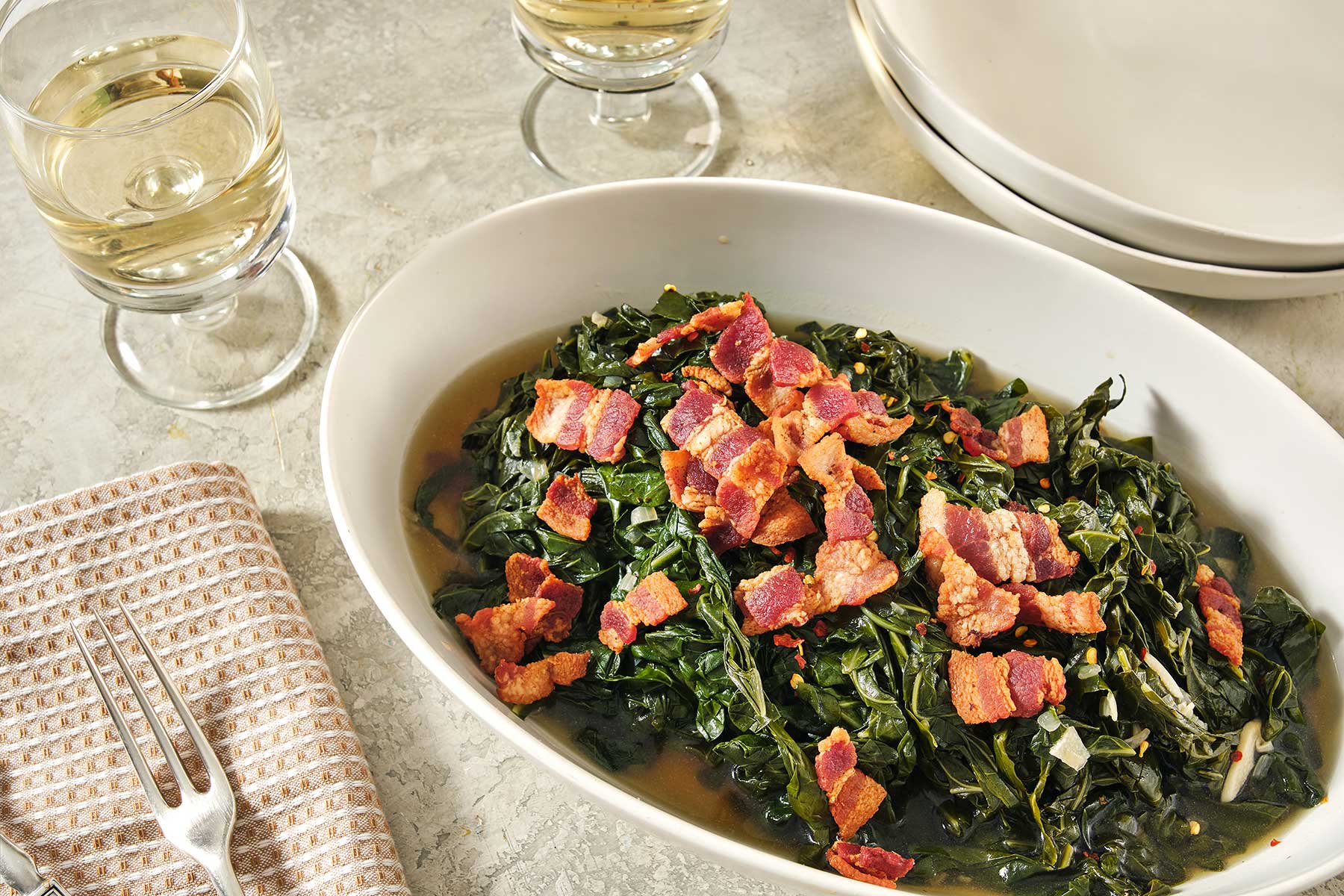
Southern Collard Greens Ingredients
- Bacon – Adds smokiness and depth of flavor.
- Collard greens – See below for how to clean them!
- Vegetable or olive oil
- Onion and garlic – Critical as the flavor base.
- Chicken or vegetable broth
- Red pepper flakes – We love a little heat in our collards. Dial it up or down as you like.
- Apple cider vinegar – The acidity lifts up all of the other deeper flavors.
For a meatless version, try Vegetarian Collard Greens.
How to Clean Collard Greens
Collard greens can be very dirty and gritty, and it is essential to wash them thoroughly before cooking them. Nothing ruins a plate of great collard greens more than some crunchy grit between your teeth.
Fill a very large bowl or a sparkling clean sink with cold water, and dunk those greens. Swish them around with your hands vigorously, then remove them, pour out or drain the water, rinse the sink or the bowl, and repeat. Do this as many times as necessary to remove all of the dirt from the greens. The water should be totally clear with no grit on the bottom of the bowl or sink when you are done.
Removing the stems is optional, but they can be pretty tough even after cooking for a while. There is a lot of nutrition in the stems, which is why some people tend to leave them in, but if you are looking for more consistently tender cooked collards, you’ll want to remove the stems. The easiest way to remove the stems is simply to hold the stem and kind of fold the leaf in half over the stem. Then, tear the stem up and away from the leaf. No worries if the leaf tears, too — you’re going to be slicing and cooking it, so that won’t matter at all. Or slice it from the leaf with a knife on a cutting board.
What Is a Potlikker?
Potlikker (pronounced “pot liquor” and sometimes spelled that way) is the Southern term for the liquid that greens cook in. It gives them flavor and tenderness but also takes on the flavor of the greens and other ingredients. In the South, this cooking juice never gets tossed!
Potlikker is spooned over the greens themselves, as well as anything else on the plate, from mashed potatoes to grits to corn pone and cornbread. The greens, bacon, pepper flakes, onions, and garlic (and whatever other ingredients you add to the broth) infuse the cooking liquid with a robust, deep flavor. The longer you cook the collards or other greens, the more flavorful the likker will become.
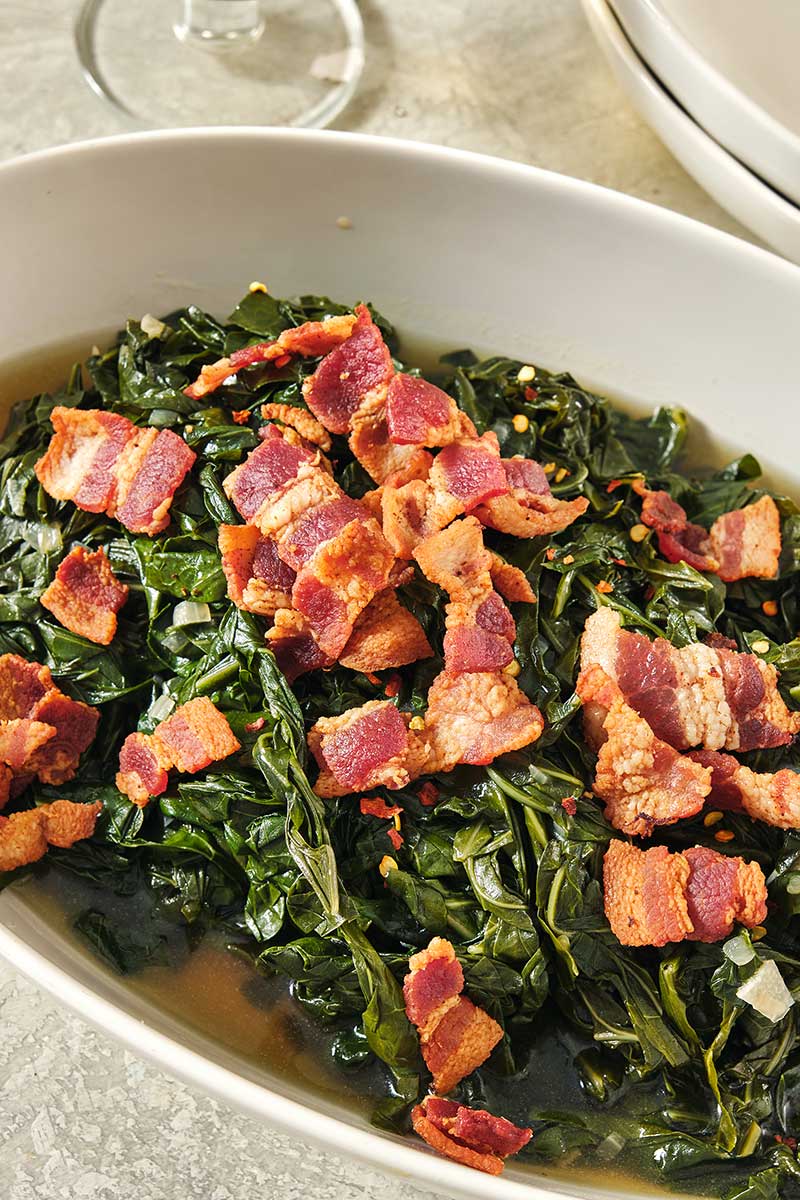
How to Make Collard Greens with Bacon
- Cook the bacon: Leave the fat in the pan.
- Start cooking the greens: Saute the onions, then add the garlic. Add the greens and cook, stirring occasionally, until they begin to wilt, about 5 minutes. Pour in the broth, add the red pepper flakes, season, and bring the broth to a simmer.
- Simmer the greens: Cook, covered, stirring occasionally, for about 20 minutes, or until the collard greens are cooked to your liking.
- Finish and serve: Sprinkle the greens with the vinegar and crisped bacon, stir, and serve hot, spooning up some of the potlikker to serve with the greens.
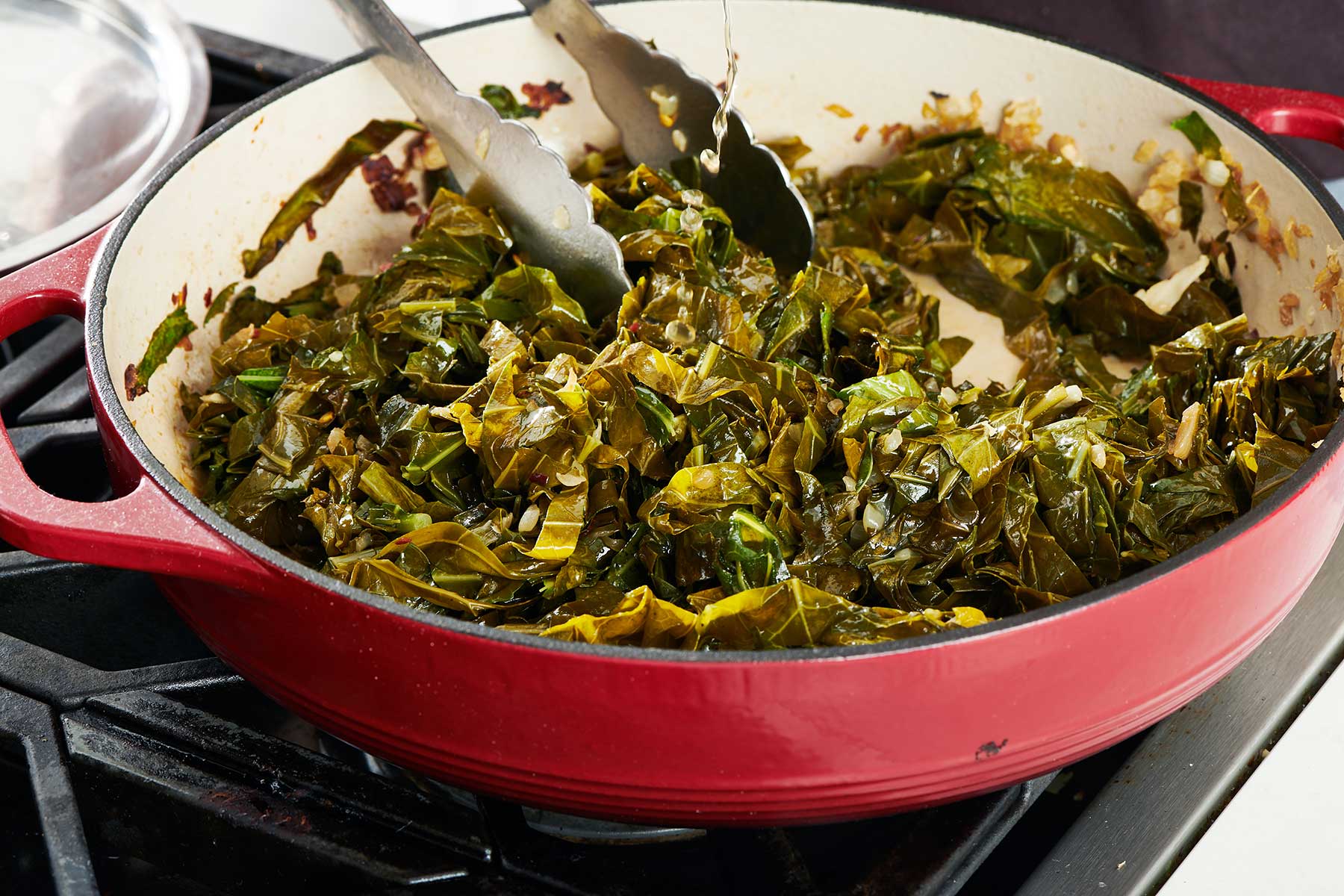
Make Ahead and Storage
You can store these in a tightly covered container for up to 5 days in the fridge. Reheat gently with the potlikker over medium-low heat until hot throughout, stirring frequently.
Cooked collards can also be frozen with their liquid. Place them, with some of the pot likker, in freezer-proof zipper top bags, press out any additional air, and freeze for up to 6 months. Thaw overnight in the refrigerator or on the counter for a few hours before reheating.
What to Serve With Southern Collard Greens:
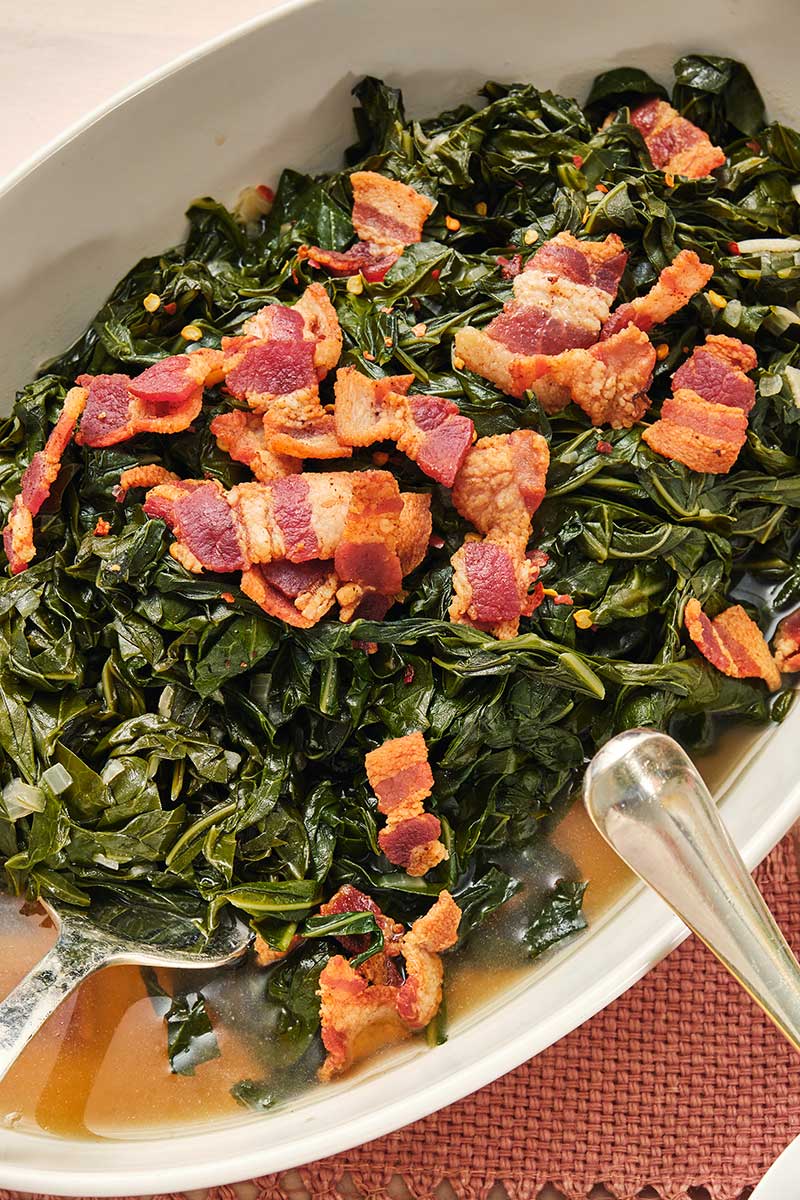
More Greens Recipes
- Sautéed Broccolini
- Beets and Sautéed Beet Greens
- Sautéed Kale
- Swiss Chard
- Sautéed Spinach
- Sautéed Broccoli Rabe
Pin this now to find it later
Pin It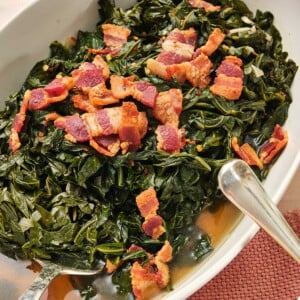
Southern Collard Greens with Bacon
Ingredients
- 2 slices bacon (preferably thick cut, sliced crosswise into 1/2-inch pieces)
- 2 pounds collard greens (very well rinsed and coarsely chopped; see Note)
- 1 tablespoon vegetable or olive oil
- 1 small onion (finely chopped)
- 1 clove garlic (very thinly sliced)
- ½ cup chicken or vegetable broth (preferably less-sodium)
- ¼ teaspoon red pepper flakes (or to taste)
- Salt and freshly ground pepper (to taste)
- 2 teaspoons apple cider vinegar
Instructions
- Line a plate with paper towels. Heat the oil in a large pot over medium-low heat. Add the bacon and sauté until crisp, about 4 minutes. Remove the bacon with a slotted spoon to the paper towels. Leave the fat in the pan.
- Add the onions and stir for about 3 minutes until they start to turn golden. Add the garlic and stir for another two minutes, until the garlic turns golden. Add the greens to the pot and stir to coat them with the oil and onions. Cook, stirring, occasionally until they begin to wilt, about 5 minutes. Pour in the broth. Add the red pepper flakes, season with salt and pepper, then turn the heat to medium-high and bring the broth to a simmer. When the broth is simmering, lower the heat to medium and cover the pot. Cook, lifting the lid and stirring occasionally, for about 20 minutes, or until the collard greens are fairly tender but not super soft. (Or cook for more or less time! Your call!)
- Sprinkle the greens with the vinegar and crisped bacon, stir to combine, and serve hot, spooning up some of the pot likker to serve with the greens.
